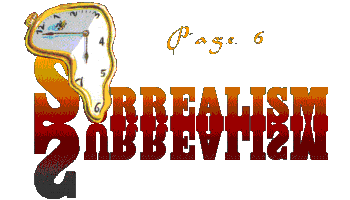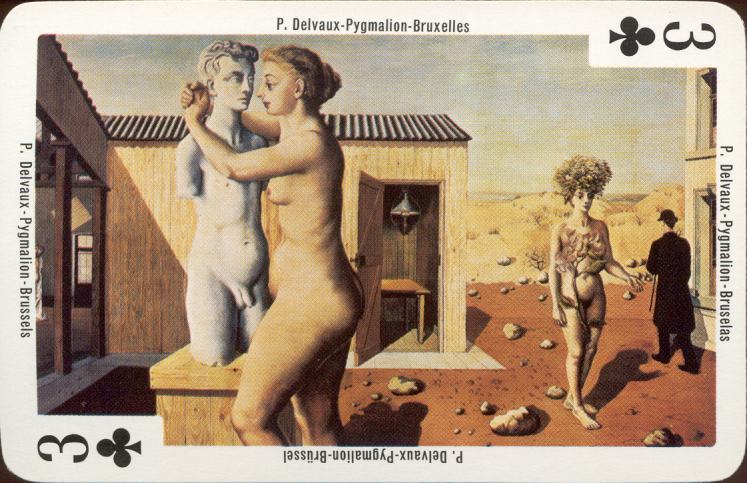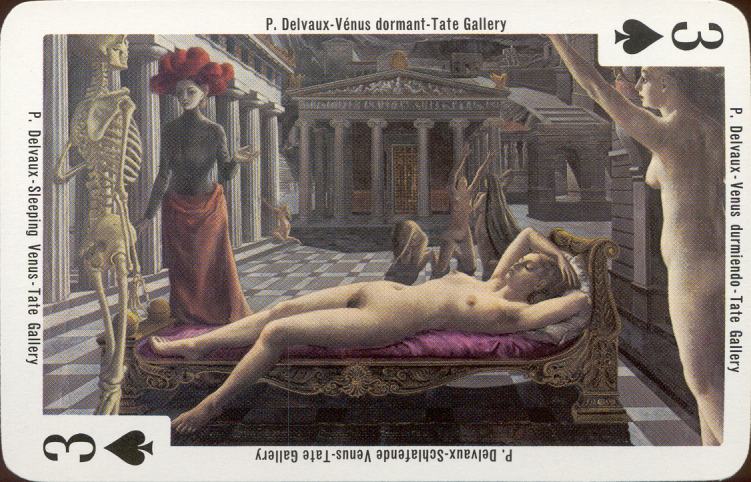|

|
In
surrealism the visual or textual imagination has been set free from
reason and logic, thus enabling the subconscious to create scenes that
are both revealing and suggestive. Surrealists create images that have
recognizable shapes, but these are placed in scenes, that don't give
them a mutual context. They stimulate the imagination and fantasy of the
beholder to create their own interpretation of the scene.
Dali saw
surrealism as capturing his dreams from the subconscious and then
consciously creating a picture of them. This view was followed by other
artist, like the Belgian
|
| painters René Magritte and Paul Delvaux. |
Paul Delvaux (1897 -
1994) has passed several style periods before ending in the surrealist group
around 1935. He had briefly studied architecture before switching to painting at
the Royal Academy in Brussels. Just like Dali he visited Italy in 1937 and
that resulted in a more classical style in Delvaux's work too.

Paul Delvaux's
surrealist period lasted until about 1955. His goal in surrealism was to create
a new reality, a synthesis between the outer world and the inner life, breaking
through the border between dream and awakeness. His work can be found in musea around
the world.
The two cards come from a deck that was printed and published by
Heraclio Fournier from Vitoria, Spain, in the 1990's as "El Desnudo en el
Arte (the Nude in Art).

-1-
-2- -3-
-4- -5-
-6-
ARTHOME or ARCHIVES


